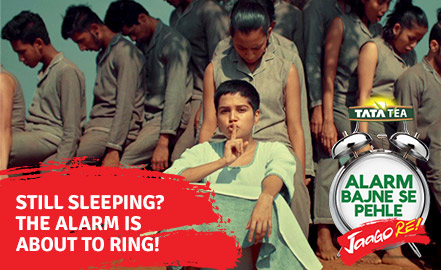Understanding the Juvenile Justice (Care and Protection) Act 2000

Crime has been rampant in India over the past few decades. Safety has become a growing concern for people. What’s more alarming are the statistics that show the disturbing trend in children below the age of 18 years who have been convicted:
- Children make up 42% of our country and 1.2% of the total crimes in India are committed by them.
- There has been a 288% increase in rape cases in the past 10 years and arrests of juveniles has also increased by 60%.
- 81% of the juveniles arrested live with their parents and majority of them come under the category of low-income families.
- Girls constituted only 6% of the total number of juveniles convicted.
It is easy to blame one another for the above numbers but before we do so, it is important to understand the laws and legislations in place for delinquency and the methods to help and rehabilitate them especially after the amendments to the Juvenile Justice (Care and Protection) Act 2000.
What is the mentioned Juvenile Justice Act 2000?
- The Juvenile Justice (Care and Protection) Act 2000 was brought into force with relation to the 1989 Convention on the Rights of the Child.
- The Act deals with laws relating to juveniles and vulnerable children who are in need of care and protection. It outlines the need for proper care, protection and treatment required to help in the development of their growth. It also adopts a child-friendly approach in the way the cases are handled to aid in the child’s well-being and help rehabilitate them.
- The Act was the sole framework for the juvenile system in India as it provides a unique approach towards the prevention and treatment of juvenile delinquency.
- It has seen changes in 2006 and 2010, but the biggest changes proposed by the Ministry of Women and Child Development were passed by the Lok Sabha in May this year.
Background to the Amendments
During the Nirbhaya case in 2012, one of the most important issues that came to light was the conviction of a minor who was 17 when he committed the crime. He was tried in juvenile court and given a sentence of 3 years for the brutal rape and murder. This created context for the amendments to the Juvenile Justice Act 2000 as people demanded stricter punishments for minors who had committed serious offences and/or heinous acts.
The amendments to the Juvenile Justice Act 2000
- If a crime has been convicted by a person between the ages of 16-18 years, it will be assessed by the Juvenile Justice Board to determine if the crime was committed as a ‘child’ or an ‘adult’.
- The board will constitute of social workers and psychologists who will be able to make a fair judgement about the intensity of the crime which will help safeguard the rights of the juvenile.
- A Child Welfare Committees will also be set up which will determine if a child needs to be placed in institutional care and protection.
- The new legislation now also clearly defines crimes as heinous, petty or serious - this aspect wasn’t included in the act before.
- The new Act includes processes for adoption of orphaned, abandoned and surrendered children. It established authority of the Child Adoption Resources Authority (CARA) which will also have powers to facilitate inter-country adoption.
- The Act also includes penalties against treating a child cruelly, offering narcotics to a child and abduction or selling of a child.
- The law also separately raised the age for consensual sex from 16 to 18 years which makes it illegal for children to be engaged in sexual activities.
Kamlesh Kumar Mishra, an advocate with Human Rights Law Network, offers an opinion to the Act - “Many of the ‘rape cases’ involve a relationship between a girl and boy who decide to elope and are eventually caught by the police and parents who press charges. They still are vulnerable and can be taught what is wrong and right.” Around 40% of the rape cases reported against under-age boys are consensual affairs between a girl and a boy.
There are different opinions on the new amendments as they are a direct violation to the United Nations Convention on the Rights of the Child which India accepted and signed 25 years ago. Will having such a law be enough? Can stricter punishment solve the issue? Comment with your responses below or your tweet in your responses to #JaagoRe
Sources:
Press Information Bureau
Firstpost
The Hindu
Hindustan Times
Indian Express
The Gazette of India
The Hindu
Share this story on
One India, One Market under GST (Goods and Services Tax)

Tax is a huge source of revenue for our state and central governments, but owing to the complex nature of our current tax system, it’s not a surprise that many people do not understand how it works. The Goods and Services Bill has been discussed by different parliamentary committees since 2006. It came into news again when the Lok Sabha finally passed the bill
What is GST?
The Goods and Services Tax is a comprehensive tax system levied on goods and services at a national level.
This system will collect taxes at the consumption-level where the consumers buy the goods and services from a retailer or a service provider, and will replace all different kinds of indirect taxes with the one single tax system. Almost 150 countries have a GST in place, and the World Bank has been urging India to implement it for a long time now.
What will the GST do?
Right now taxes are managed differently by the state and central governments.
There are taxes like central excise duty, service tax & customs duties at the central level, and VAT (value-added tax), entertainment tax, luxury tax or lottery taxes at the state level on the same commodities or services.
This results in cumulative taxes, thus making the goods and services costlier.
With the new change, since GST collects taxes only at the purchase level, it may reduce the overall cost of manufacturing the goods or running the business, and also could facilitate tax compliance. The two ways this could help our economy is that it could reduce corruption than the current tax system sees at different levels, and it could bring more efficiency in running of businesses with no tax burden on the manufacturers and providers of goods and services.
The need for GST!
One of the main reasons for implementing GST is to remove the cascading effect of taxes, which in simple term means “taxes on taxes”. For example, let’s say Mr. X sells goods to Mr. Y after charging sales tax and in return Mr. Y further sells those goods to Mr. Z again after charging sales tax and Mr. Y while calculating his sales tax liability will also include the sales tax paid by him on his previous purchase and that will result in to a tax being paid on taxes again.
So in the above example, if there was a tax paid on Rs. 3 lakhs (sale value) at 15% at the first stage then the total tax liability will come out to be Rs. 45,000/-. And now in the next stage when these goods are further sold say at Rs.4 lakhs then the tax liability will be Rs.60,000/-. But now, there will be a set off of Rs.45,000/- as available which will make the actual tax at the last stage to be just Rs.15,000/-
How will GST affect our economy?
GST may help increase India’s overall GDP (Gross Domestic Product) and increase its total revenue collections.
A simpler tax structure will encourage exports and foreign investments, which will increase employment opportunities (and could help towards the “Make in India” project of the government).
It could help integrate the entire nation under one tax system, thus opening (and simplifying) inter-state business. This will benefit smaller businesses in India.
How will GST affect the common man?
The tax system in India is very complex right now and it makes it difficult for various businesses to comply with a cumulative tax structure. If GST can reduce the operating cost of these businesses, it will lead to lower taxes to be paid by the consumer at the end-level. The benefit to businesses and consumers will eventually increase India’s GDP and overall income, and consumers can expect more indirect benefit after its rollout.
The full impact of the GST can be understood only after it is implemented but it will definitely help reduce corruption at various levels where taxes are collected right now.
The Challenges ahead of GST!
1. It doesn't include certain products like petroleum & alcohol products, which defy the purpose and also results in a heavy loss to the exchequer.
2. We really need a very robust IT - Information Technology (infrastructure) set up at the grass-root levels and this has to be factored well in advance.
3. There is a strong need of making the entire process in terms of bringing standardization in the entire systems, rules, principles & procedures across levels.
4. Need to empower the government machinery before bringing this massive change?
5. Similarly, government need to create ample awareness via different medium to educate the common man, because it has been seen more often, then any changes by the government specially for the common man is not informed to them well in advance. Proper channels to address their concerns should be taken up and they should be taken in to confidence before implementing any major changes affecting them.
6. Similarly, government also needs to educate small entrepreneurs, traders & businessmen.
Conclusion:
GST would facilitate seamless movement across nation and will reduce the overall transactional cost of running the business and thereby also reducing the compliance of following multiple tax rules and obligations. This is highly relevant in todays time looking at the growth Indian economy can achieve and to come alongside the other developing nations as it will reduce corruption and bring more efficiency of running the businesses.
GST is clearly a long-term strategy but apart from the challenges as mentioned above, we also have to bear the likely higher inflation rates/administrative & management overheads in the initial stages.
Sources:
1. The Times of India
2. GSTIndia.com
More about the author:
Disclaimer:
Views expressed here are of the author alone and do not necessarily represent that of the brand.
Share this story on
8 Things You Should Know About the Road Transport and Safety Bill

The Road Transport and Safety Bill, proposed in 2014, suggested many changes in the existing system. This Bill, if implemented, will replace the Motor Vehicles Act of 1988, which regulates the road transport system in India now. The purpose of this Bill, as stated in the draft, is to provide a scientifically planned and evolving system for the safety of all road users in India, to improve the existing transport system, and to encourage better infrastructure and vehicles*.
The Ministry of Road Transport and Highways opened the Bill for public discussion, after which the fourth version of the Bill was proposed in April 2015.
What are the key points** in the Bill?
- The Bill will replace the Motor Vehicles Act, 1988 and provide stricter punishments for offences
- A nation-wide minimum safety standard for vehicles, roads and users will be implemented
- A centralized unit called the Motor Vehicle Regulation and Road Safety Authority of India will look after regulation of road transport and road safety in India, replacing state transport departments
- The centralized unit will also be responsible for collecting vehicle taxes, registration, and issuance of permits
- One person will be allowed to own only one Driving License
- Test for driving license will be automated
- A Uniform Road Accident Investigation System, and a Road Accident Emergency Access Telephone Number will be introduced to help in case of accidents
- A point-based system will be used to record traffic violation by each license holder. 12 points on record will mean suspension of license for 1 year, along with fines and jail terms
With this Bill, the Ministry of Road Transport and Highways aims to reduce the number of road accidents caused due to negligent or rash driving and poor infrastructure, and also keep a check on corruption. The Bill also hopes to be able to provide speedy assistance to road accidents.
Sources:
*Ministry of Road Transport and Highways
**Press Information Bureau
The Times of India
DNA
Share this story on
Paternity Benefits for Fathers-To-Be Across the World

21st June marks Father’s Day and people all over the world are going to be celebrating the bond they share with their dads. In the same vein, times have changed and many countries have introduced ‘paternity benefits’ for new dads. Let’s take a look at the different systems that have been adopted worldwide:
1. There are 96 countries around the world which have compulsory paid leave for new fathers which is reserved for men or a system which allows the couple to share the leave.
2. In Norway, new fathers are entitled to 2 weeks of paid leave when the baby is born and have to take a mandatory of 14 weeks worth of paid leave before the child turns 3 years.
3. In the United Kingdom, the father is eligible for 1 or 2 weeks paid paternity leave and 26 additional weeks if the mother decides to return to work.
4. In United States, there is no paternity leave or even maternity leave as dictated by the government. It depends on the company.
5. Australia allows 2 weeks of paternity leave at National Minimum Wage and new parents get to share 52 weeks of unpaid leave.
6. Malaysia does not have a system of paternity leave but male civil servants in the country can take upto 14 days.
7. Paternity leave in India is sanctioned for government employees with less than 2 surviving children for a period of 15 days. However, there is no rule as such for private companies.
8. Male employees of Public Sector Undertaking (Nationalised) banks in India have recently been given 15 days of paid leave which can be availed 15 days prior or after the birth of their child.
Some companies in India have started looking at paternity benefits as a necessity and offer various packages for expecting or new fathers. Many consultants for companies also view this as a necessary step to not only strengthen the bond between children and their fathers, but also to help bring about equality in the workspace.
India might have a more accommodating policy on paternity benefits compared to other countries - however, many sectors in the space of domestic work, agriculture, small and large scale factories within the country are still struggling to even provide maternity benefits for mothers-to-be, which is a direct violation of the Maternity Benefit Act 1961.
The need for a work culture that is more mom-friendly is also raised in our Power of 49 manifesto that sought the “Provision of mandatory creches and women-friendly maternity policies that include long-term leave-both rural and urban.” In a country as diverse as ours, what do you think can be done to make this a reality? Share your views in your comments below:
Sources:
International Labour Organization
The Guardian
Good Infographics
Share this story on
What to do or not do in an earthquake

The massive earthquake in Nepal has affected many families in the country, with shocks felt in some regions in India too. Many are feared dead and injured.
Aftershocks following such a huge earthquake are not uncommon and being prepared in the event of any catastrophe can help avert further damage to one's being.
Here is some information to remember during such a catastrophe:
What to do when you are indoors during an earthquake
1. Switch off the gas and electrical circuits
2. Crawl under a bed, chair or table and stay still
3. If you don’t have any kind of furniture to crawl under, cover your head and face with your arms
4. Stay away from glass, windows or such structures that could fall on you
5. Do not use elevators during a quake
6. If you are stuck in an elevator, try to exit immediately, else crouch in the corner and cover your head and face with your arms
What to do when you are outdoors during an earthquake
1. Stay away from streetlamps, poles, buildings, wires or any tall structures
2. Stay outside until the tremors cease. Areas near buildings, exits and walls are the most vulnerable areas prone to cause harm
What to do if you are in a moving vehicle during an earthquake
1. Stay in the vehicle, and stop as soon as safety permits.
2. Don’t halt near or under trees, overpasses, tall structures like building or lampposts and utility wires
3. Once the tremors have stopped, move slowly. Don’t use roads, bridges, or ramps that might have been damaged by the earthquake
What to do if you are trapped under a debris
1. It will be dark, but do not light a match. There could be a leak of poisonous gases, and you could ignite it
2. Do not move around as you could cause bigger debris to fall upon you or kick up dust thereby making it difficult for you to breathe
3. Cover your mouth with some form of cloth
4. Don’t shout for help as doing so will consume more oxygen and tire you out – shouting could also lead you to breathing in the dust, which could lead to suffocation
5. Tap on a pipe or wall to create a sound so that rescuers can locate you
Source of information: http://www.ses.vic.gov.au/
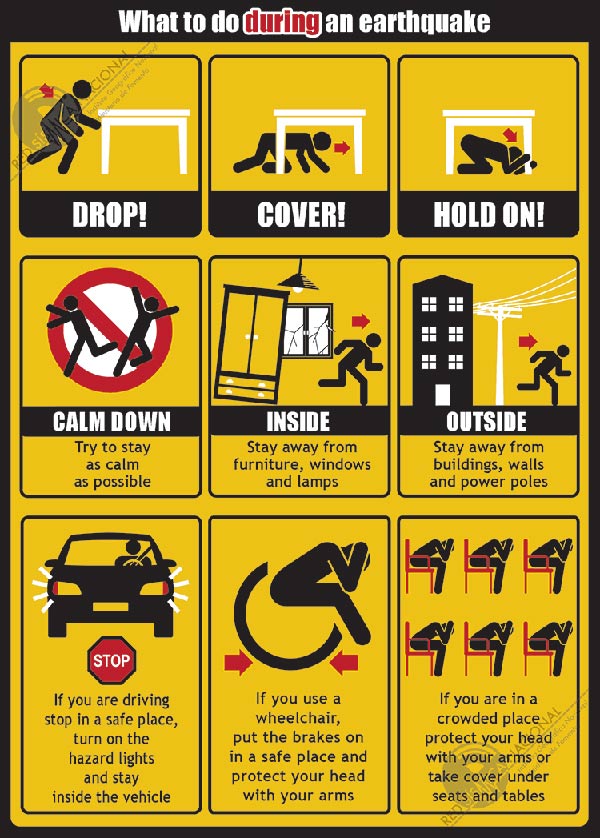
Nepal Earthquake Emergency Numbers & Important Information
Ministry of External Affairs Control Room Numbers:
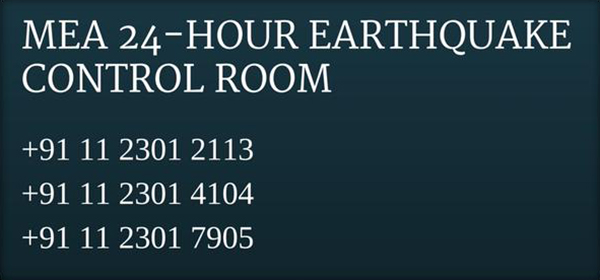
Source: All India Radio News
Other Emergency Contact Numbers
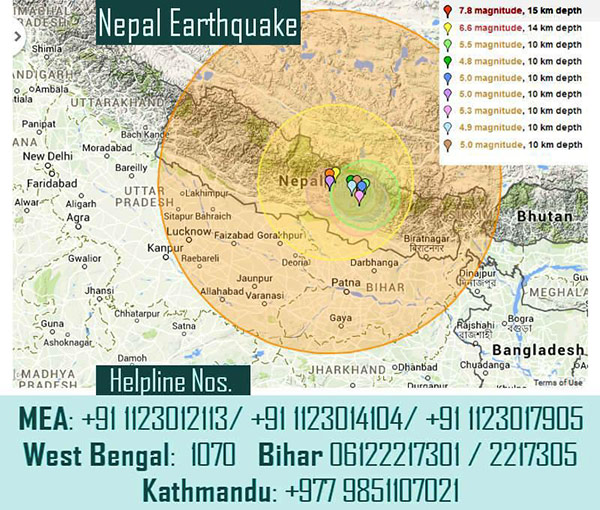
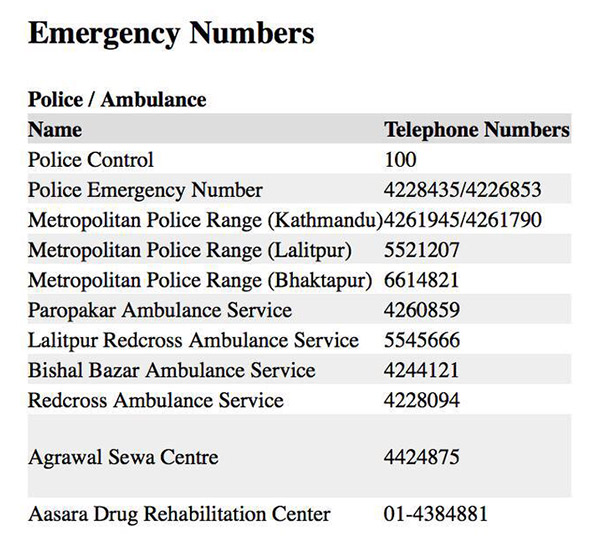
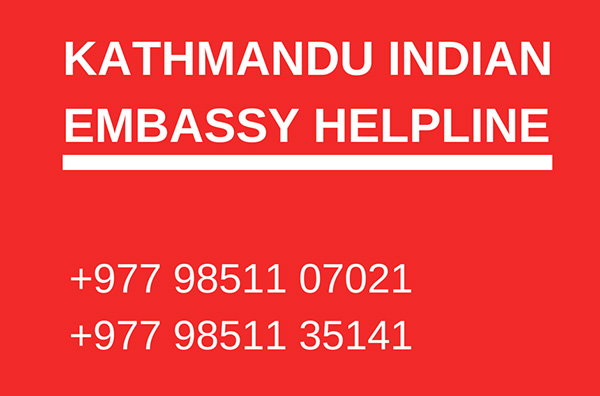
Source: Huff Post
To access the readymade earthquake emergency survival guide, click here:
To access the Google Person Finder for those stranded in the Nepal Earthquake, click here
Facebook introduced an online service to check if your friends and family are safe. To access Facebook Safety Check, click here
Our prayers are with the people who have been affected by this tragedy. In this hour of need, we hope that we all stay together in spirit and support.
Share this story on
Someone you know could have mental health issues. What is India planning to do?
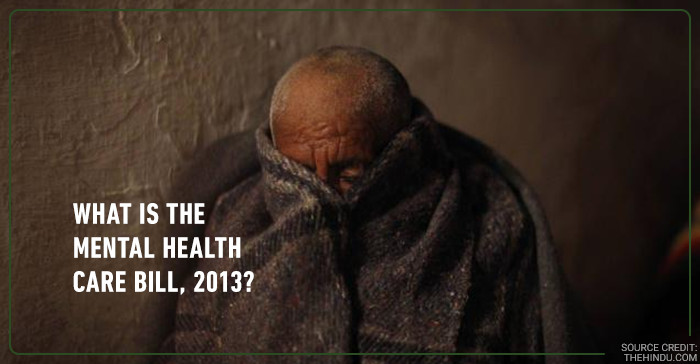
“20% of the population will be suffering from mental health issues by 2020 in India.” (Wall Street Journal)
Though the issue of mental illness is not new to India, the increasing number of people affected by it is a growing concern. It is estimated that there is only one psychiatrist for every 343,000 people and most mental health institutions are in a dismal state. To combat these grim facts, the Parliament sought to bring about the Mental Health Care Bill, 2013 to repeal the old Mental Health Act, 1987.
Though, the Bill hasn’t been passed yet by the parliament, it hopes to address the inadequacies of the old Act which. This includes protection of people with mental illnesses and access to mental health care.
The following are some of the key features of the Mental Health Care Bill, 2013:
Giving rights to people with mental illness:
Access to mental health care and treatment from government-funded or government-run services. This includes the right to access, affordable and good quality mental health.
Access to mental health care and treatment from government-funded or government-run services. This includes the right to access, affordable and good quality mental health.
Free legal services and access to their medical records.
Provisions to make complaints about unsatisfactory practices of mental health care or services.
Handing over power of judgement to a surrogate decision maker:
If a person feels that he/she is incapable of making judgements then he/she can appoint a surrogate decision maker through an advance directive (a legal document that replaces the mentally challenged person from making decisions and gives to a replacement chosen by him/her).
The person/surrogate will be able to choose on behalf of the mentally challenged, on how the patient will be treated and for how long.
This power of attorney certificate will have to be certified by a medical practitioner first registered with the medical health board.
If the relative/caregiver nominated by the mentally challenged person does not wish to follow the directive, he/she can make an application to the Mental Health Board in order to review, alter or cancel the advance directive.
With rising cases of depression and mental illnesses, India has become the country with the highest number of suicides. There is an immediate need for attention to be diverted to Mental Health issues and the need for more medical professionals and establishments. What are your views on the same? Please write to us at jagoorein@gmail.com or tweet to us @jaagoRe.
*We will be continuing the key points from the Mental Health Care Act, 2013 in our next article.*
Sources:
PRS
Wall Street Journal
TNhealth
Share this story on
Someone you know could have mental health issues. What is India planning to do? (Part 2)
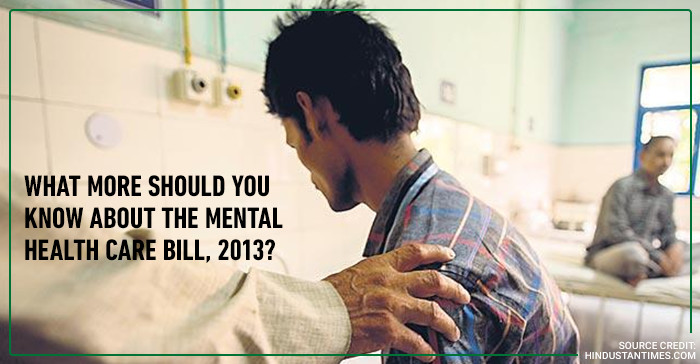
“There are over 2 million patients affected with mental disabilities and only 43 state-run mental hospitals and an unknown number of private practices.” (NDTV)
In our previous article we looked at the rights that the Mental Health Care Bill, 2013 would give people with mental disabilities. In this article we will look at the roles of establishments and institutions as prescribed by the Act.
Central and State Mental Health Authority:
These are administrative bodies who have to:-
Maintain a record of all mental health establishments who will have to fulfil different criteria as directed by the Authority.
Make quality and service provision guidelines for such establishments.
Maintain a record of mental health professionals across the country.
Train law enforcement officials and mental health professionals on the Act.
Receive complaints on the inadequacies in the services
Advice the government on matters relating to mental health.
A process and procedure shall be followed at all times by establishments while admitting, treating or discharging mentally ill individuals.
Mental Health Review Commission and Board
The commission will be able to make decisions and arbitrations on its own and will periodically review the use of and the procedure of making advance directives.
It will also advise the government protection of the rights of mentally ill persons.
It will also constitute Medical Health Review boards in the district of different states.
The board will also have the authority to register, alter or cancel an advance directive.
The board will appoint its own representative.
The board will also decide on complaints regarding inadequacies in care and services by mental health establishments.
It will also decide on applications from a mentally ill person, his/her relatives against decision of medical health officers or psychiatrists of a mental health institution.
Decriminalising suicide and forbidding the use of electro-convulsive therapy
Suicide is seen as a criminal activity in India but under the Act it will not be punishable under the Indian Penal Code.
Also, the use of electro-convulsive therapy will only be allowed, with the use of muscle relaxants and anaesthesia. Its use will be prohibited for minors.
The state of mental health in India has been very dismal with many mental hospitals in an inhospitable state. Many of these establishments even lack basic necessities such as toilets. There is an urgent need to help divert attention to the plight of those affected by mental disabilities and provide them with the care they require.
Sources:
PRS
NDTV
Times of India
Share this story on
Witnessed a crime in India? Here’s what you need to know!
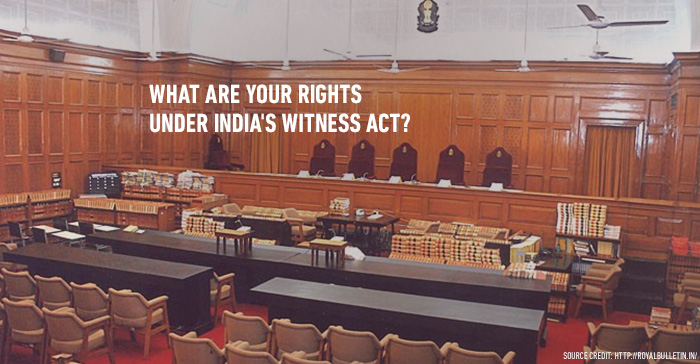
Who is a Whistleblower, and what does the Whistleblower Protection Act do?
A whistleblower is someone who reveals sensitive information about misconduct of a public official or an organization. Eg- Using low grade materials while constructing roads in order to pocket public money. India has seen many Whistleblowers who have risked their lives to let the public know of illegal or corrupt activities.
In order to safeguard and protect such people, the government introduced the Whistleblower act in 2014 which guaranteed protection of a person’s identity and information revealed by the person. Under this Act, anybody could reveal information related to corruption or misuse of power by government officials and public offices with or without the RTI (Right To Information).
What are the amendments made to the Act?
On May, 2015 the Act was was amended so that protection would be guaranteed to a Whistleblower only if the information revealed met certain parameters.
Individuals enjoyed protection by the government if they revealed sensitive information about activities that could harm the country and it’s public. According to the amendments, the Act will not protect a whistleblower if the information revealed falls under certain criteria.
Here are the kinds of information that will not allow protection to a whistleblower:
1. Any information that harms the integrity or sovereignty of the country or if the information is a threat to the country’s security, economic, strategic and scientific interests with foreign states.
2. Any information from discussions and cabinet papers of Council of Ministers, secretaries and other government officials.
3. Any information that has been restricted by the court and will go against it’s given orders.
4. Parliamentarians and MP’s enjoy certain privileges, given their position as India’s decision makers. Revealing any information that would harm this privilege will not allow protection under the Act.
5. A company or an individual’s trade secrets, commercials, inventions, artistic or literary work cannot be revealed if it harms its business.
6. If the information is shared between two people and they agree to not disclose it, then both parties cannot reveal it, unless it is covered under the RTI.
7. Information revealed by a foreign government in trust cannot be revealed.
8. If revelation of details and information could endanger the life and safety of a person, it cannot be revealed. The source of information given in confidence for law or security enforcement also cannot be made known.
9. If the disclosure of information will setback the process of investigation, apprehension and prosecution of offenders.
10. No information that might fall under public interest, but is an invasion of privacy cannot be revealed unless it has been made available under the RTI.
If information revealed falls under any of the points given above, then the accused person or organization will not be required to give an explanation or answer any questions pertaining to the accusations. A written document will also be issued by the government which will further protect the accused from any inquiries.
The Whistleblower Act has become an integral part of the country’s democracy. These amendments have seen support, and at the same time dissent from the public. What are your opinions on the same?
Let us know your views by posting your comments below or mail us at jaagorein@gmail.com. You can also tweet to us at @jaagoRe.
Share this story on
What you need to Know about the Child Labour (Prohibition and Regulation) Act

There are about 43.53 lakh child labourers in India. The Indian government and various organizations have been trying to curb this social evil and reduce this number. Recently, a number of amendments were made to the Child Labour Act in a bid to address the issue of child labour. Before we get to the amendments, let’s understand what the Act is all about:
What is the Child Labour Act about?
The Child Labour Act was put together by different initiatives and organizations such as the National Commission on Labour (1966-69), Gurupadaswamy Committee on Child Labour (1979), Sanat Mehta Committee (1984) and others to safeguard the rights of children in employment.
- It hoped to ban employment of children below the age of 14 in hazardous workplaces such as factories, mines, etc and to help regulate the employment of children in working situations.
- The Act states that a child is anyone who has not yet attained the age of 14 years.
- There are 18 occupations and 65 processes that ban the working of children in these areas.
Now let us look at the amendments that were made to the Act this year
The Child Labour Prohibition and Regulation Act 2012 was proposed in the Rajya Sabha by the then Minister of Labour and Employment, Mallikarjun Kharge and passed by the Union Cabinet in May this year.
-
The Right of Children to Free and Compulsory Education Act 2009 prohibits employment of children below 14 years in all occupations and processes but the amendment has made space for children (below the age of 14 years) to work in a family run business and audio-visual communication (entertainment) except the circus provided-
It’s not a hazardous work condition
The child can work only after school hours or during vacations. - The amendment also increases the age group to include ‘adolescents’ between the ages of 14-18 to protect them from hazardous working conditions. The official statement cites this changes a way to safeguard them from employment that is not suitable for their age.
- The punishment for people breaching the act before the amendment was a minimum sentence of 3 months in prison and/or a minimum fine of Rs.10000 for first time offenders, and a minimum sentence of 6 months for second time offenders.
- The new changes make the punishments harsher by increasing the sentence for 1st time offenders to 6 months which may extend to 2 years and a fine of less than Rs.20,000 but which may extend to Rs.50,000.
- For second time offenders, the imprisonment term has been increased to 1 year which may extend to 3 years.
- Police personnel can arrest a person without a warrant if they think he/she has breached the restrictions laid down by the Act.
- In the Act before the amendment, parents would be handed the same punishment as an employer who had not obeyed the conditions laid down by the Act. But the amendments have decreased the penalty for the parents/guardians to Rs.10,000 only if they are 2nd time offenders. They will not be charged if they are caught the first time.
- The Act now will also provide for a fund to help rehabilitate a child or adolescent who has been rescued through the Constitution of Child and Adolescent Labour Rehabilitation Fund in one or more districts.
What do you think of the amendment? We would like to hear your views this Anti Child Labour Day on 12th June (Friday) at 12pm where we have experts from CRY (Child Rights and You), CWC (Concerned for Working Children) and MV Foundation - The Mamidipudi Venkatarangaiya Foundation discussing the ‘pros and cons of the amendment to the Child Labour Act on our Twitter handle @jaagore.
Sources:
Childline India
PRS India Organization
BBA Organization
The Hindu
Press Information Bureau
Times of India
Share this story on
Are big cities in India prepared for natural disasters?

After the earthquake that shattered parts of India and Nepal, concerns on disaster and safety are echoing across the sub-continent.
How prepared is India if a disaster of the same magnitude were to strike us? Let’s take a look at some of the major cities in India and their mechanisms in place to defend ourselves against natural calamities:
Bangalore
The garden city with a rapidly growing population of 10,839,725 is relatively less prone to disaster. According to research, it is in seismic zone 2 (least active) but is slowly moving into zone 3 (moderate activity) owing to ‘land use pattern’ and increase in population. Though, 80% of Karnataka is drought prone, Bangalore enjoys a good water supply because of the Cauvery River and the year round rainfall.
Apart from NDMA (National Disaster Management Authority) there is KSDMA (Karnataka State Disaster Management Authority) and KSNDMC (Karnataka State Natural Disaster Monitoring Centre) that handle issues related to disaster preparedness and disaster management.
The KSDMA under the Chief Minister
- Assess the vulnerabilities of each area in the state and help provide possible measures.
- Generate awareness on the hazards among various institutions.
- Provide ‘forecasting, early warning, advisories and preparedness in management of natural disasters.’
Chennai
The Southernmost Metropolitan City with its population of 9,121,477 is in seismic zone 3 (moderate activity). The city has already witnessed a devastating Tsunami in 2006, post which the state set up the Tsunami Rehabilitation Programme. Chennai is also constantly threatened by Cyclones. What is the government doing to safeguard the coastal city?
It has the CDMM (Centre for Disaster Mitigation Management) managed by Anna University in collaboration with state government, apart from which there is a local branch of the NDMA. Though there is the Tamil Nadu State Disaster Management Authority, the plan which was formulated way back in 2003.
The CDMM researches on the various impending natural disasters whereas the NDMA helps the state in policy, planning and capacity building.

Delhi
The capital city with a population of 18,248,290 houses the headquarters of NDMA. Delhi being in seismic zone 4 (high activity) is one of India’s most vulnerable metropolitan cities when it comes to earthquakes. Being in such a volatile location, the city also has the DDMA (Delhi Disaster Management Authority) which makes sure the city has no imminent threat.
The DDMA
- Equips each locality to use funds allocated for disaster management activities
- It trains search and rescue teams, police and fire personnel to handle situations of disaster
- Chalks out plans to prepare against disasters.
Hyderabad
Two years back, a newspaper article had criticised the city with its population of 11, 48,741 for lacking a CDMP (City Disaster Management Plan). While the city is in seismic zone 2(least activity), it is prone to floods and cyclones, having recently seen a spate of the same.
Apart from the local chapter of NDMA, Hyderabad still lacks a proper city disaster plan.
Kolkata
The Eastern city lies in seismic zone 3 (moderate activity). With a population of 44, 86,679 the city houses the West Bengal Disaster Management Department. Though the city has no plan in place, WBMD has laid out plans for the entire state to prevent and provide relief against and during any natural disasters which compensate for it.
The WBDMD-
- Arranges for crisis management during natural calamities
- Prepares disaster management plans for all tiers in the State
Mumbai
The island city with its 12,772,094 population sees its share of flooding due to poor infrastructure and heavy rainfall every year. Falling in seismic zone 3 (moderate activity) the city is at high risk owing to the haphazard city plan. Though the city has a disaster wing under the Municipal Corporation of greater Mumbai the city’s haphazard planning proves to be a major threat during any disaster.
The Greater Mumbai Disaster Management Action Plan formulated in 2007 lays out-
- Different areas and their vulnerabilities in Mumbai
- The various mitigation and preparedness strategies
- Responsibilities of different forces during any calamity
Recent disasters like the Nepal earthquake and the flood in Kashmir have reminded us the need to be prepared for disasters and our cities being the most populous regions in the country are usually at high risk. However, as we see above, many cities still do not have adequate mechanisms or plans to deal with these situations. It’s about time we as citizen urged the authorities to take disaster preparedness more seriously, don’t you think?
Sources
NDMA
Indiaonlinepages
KSDMA
CDMM
DDMA
WBMD
GMDMA
Share this story on
